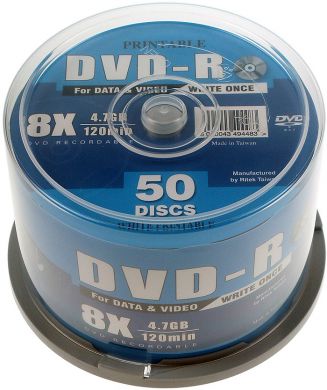CD’s & DVD’s How Long Do They Last?
When you burn music, movies, or data files onto a CD or DVD you’re probably expecting that the data will still be there the next time you use the disc, whether it’s a matter of days, months, or years. But will it really? Well, store bought discs will last a very long time, but the discs you burn with your computer’s CD/DVD burner won’t last forever.
It’s impossible to give exact numbers for CD Media Longevity or DVD Media Longevity. However, accelerated aging tests have shown that high quality discs could retain their data for up to 200 years. I’ve had experiences where discs that are just a few years old are unreadable. Keep in mind that rewritable discs, such as CD-RWs and DVD-RWs, typically last for a far shorter period of time.
Does Quality Make a Difference?
The quality of CDs and DVDs varies greatly from manufacturer to manufacturer. Higher quality discs, if treated with care, last longer than those of a lower quality. As previously stated, low priced discs usually equal low quality so, if longevity is a concern, don’t be cheap. Also, discs manufactured in Japan are generally considered to be of a higher quality than most of the ones manufactured elsewhere in the world.
Other factors in a disc’s quality, aside from the manufacturing process, are the type of dye and reflective layer used to make the disc. Once again, CDs and DVDs haven’t been around long enough to give a definitive answer about which combination produces the highest longevity. There has, however, been much debate on this topic. The general consensus is that a gold reflective layer is longer lasting than a silver reflective layer (to tell the difference you’ll need to look at the bottom of the disc, which is the side that does not have the disc label printed on it) although gold discs are typically more expensive.
For CDs, all current dyes seem to provide about the same lifespan, although Phthalocyanine is often said to be the best. Telling which dye is used on a CD can be difficult, but discs using Phthalocyanine have a green or yellow tinge on the bottom. Unfortunately, though DVDs use similar dyes, manufacturers have intentionally kept the bottom of all their DVDs the same color, preventing consumers from discovering which dye was used.
Do Brands Make a Difference?
All brands of CDs and DVDs are not created equal. Cheaper brands are usually of a lower quality than the more expensive ones. Although most brand recommendations should be taken with a grain of salt, some common high quality favorites include:
Kodak
Taiyo Yuden
Mitsui
Verbatim
What Can You Do to Make DVDs and CDs Last?Below is a list of some of the most important Dos and Don’ts when taking care of CDs and DVD’s.
DO:
Avoid scratching discs.
Keep discs away from dirt and dust.
Only touch the outer rim and/or central hole on discs.
Leave discs in their cases when not in use.
Use only non-solvent based permanent makers to write on the label side of the disc.
Store discs vertically.
Store discs in a dry, cool, and dark environment.
Only clean your discs with deionizer or distilled water and/or rubbing alcohol.
Only wipe your discs with lint free cloths or photo lens tissues.
Only wipe your discs going from the center out.
DON’T:
Scratch discs.
Let dirt or dust accumulate on discs.
Get fingerprints on the surface of discs.
Leave discs lying outside their cases.
Write on or otherwise mark the bottom of discs.
Store discs horizontally for a long period of time.
Expose discs to direct sunlight.
Expose discs to extreme temperature or humidity.
Expose discs to rapid changes in temperature or humidity.
Wipe discs in a circular motion.



